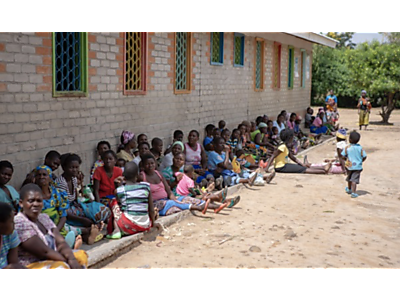
Picture by Mark, Malawi
You need to be logged in to post messages
1. Disruption of education infrastructure
In the face of floods, schools have been dilapidated
2. Low levels of productivity
This arises due to food shortages & drought
3. Low level of enrolment
For instance, in Northern Nigeria, students travel long distances in search of potable water:
4. Migration to other areas :
Impact previous education system of children
5. Postponement of face to face education delivery
under sudden snow
6. Resource re-allocation
Imagine funds allocated for climate change mitigation and/or adaptation, what if we apportion such to the academia sector?
7. Climate change has expanded the education system
Not only has climate change negatively impacted the academia, it has on the other hand positively widened it. For instance, In Malawi, public universities like Lilongwe University of Agriculture and Natural Resources (LUANAR) has introduced climate change not only as a course but also as a Master of Science Degree program in Climate Change.
8. Closure of schools
In the face of climate change, there has been spatial and temporal variations in weather and climate. In remediation, is the Cyclone Ana.
During this era, Malawian schools were closed.
By JOSHUA LUNGU
Education is a critical agent in addressing the issues of climate change and when this happens society has to adapt or maybe society has to shit down temporarily. However the climate change has a direct impact om education therefore. The primary impacts of climate change on education arise from the effect of extreme weather events such as heavy rains accompanied by floods, strong winds and hail storms with short and long term consequences as follows
a) Drought and increasing temperatures lead to poor harvest and food scarcity which have negative impacts upon educational attainment for instance , girls are the first to leave school during climate arises in order to help ease the burden of scarce household resources even according
to our traditional practices or gender norms often means girls and women are responsible for fetching water, as results, girls are more likely to be withdrawn from school during times of drought
b) Drought can make girls more likely to miss school when on their mensuration periods. This is so due to lack of menstrual health products and becomes even more pressing issues with climate change for instance, during drought this restricted the number of water sanitation amd hygiene facilities available to grils making it difficult for girls to attend classes
Lastly Besides the primary impacts, climate change also has secondary impacts on education, arising from ways in which households respond to, or choose to cope with and adapt to climate change as evidence by income supplementing activities or household member, migration and child marriages
Conclusion disasters don't just impact the education system, they damage homes, schools and neighborhoods, however girls are much less likely to re-enroll in school than boys following a climate related event, when schools close girls are less likey than boys to attend temporary facilities in fear of getting harassed .
Exposure to extreme temperature or rainfall in early life is associated with fewer years of schooling in later childhood. As climate change leads to increasingly severe heat waves, floods, droughts and hurricanes, it is important to understand how extreme weather impacts kids’ education in different parts of the world
THE IMPACTS OF CLIMATE CHANGE PUT ALMOST EVERYCHILD AT RISK
As schools are far apart in most of SADC region, and there comes the floods like recently, many schools were broken and education resources got soaked away, and the government to maintain this its not easy and some schools are not yet finally maintained because there is not enough fund. For this reason, many early marriages were born, a lot of school drop outs and not enough teaching and learning resources.
MEANWHILE: Online spaces are the way to zero drop out of schools and boost sustainable education systems. In all corners just as Jen and fellow team said here.